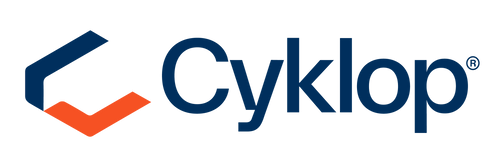Printing on Cardboard Packaging & Boxes
Cardboard is essential to the daily operations of countless companies. Prized for its tear-resistance, flexibility, and lightweight properties, many industries use cardboard for their primary, secondary, and tertiary packaging.
Whether you use cardboard for primary, secondary, or tertiary applications, you must have well-established variable data marking and product coding workflows. Depending on your industry, type of products, and other factors, you may need to outfit your cardboard packaging with the following information:
- Product title/description
- Barcodes
- QR codes
- Batch numbers/lot codes
- Expiration dates/best-before dates
- Manufacturing date
- Storage temperature
- Country of origin
- Net weight
- Regulatory symbols
- Company logos
- Contact information
Companies can apply this information with printers, lasers, or physical labels. InkJet, Inc. helps businesses more effectively complete cardboard marking applications by distributing high-quality equipment and printer fluids.
Here’s how InkJet, Inc. can help you with printing on cardboard packaging:
InkJet, Inc’s Systems for Printing on Cardboard Packaging
InkJet, Inc. meets the marking needs of diverse companies and industries by offering multiple coding system options, including:
- Thermal inkjet printers
- High-resolution case coders
- Laser systems
- Print-and-apply label machines
Each technology carries distinct application specialties, specifications, and cost factors. This table lists our various hardware options and notes their general specifications. Additional information on each machine can be located further below. Click the title in the table’s leftmost column to jump to a specific solution.
|
|
|||||
|
|
|
|
|
|
|
|
|
|
|
|
|
|
|
|
|
|
|
||
|
|
|
|
|
||
|
|
|
|
|
|
|
|
|
|
|
|
|
|
|
|
|
|
|
|
|
Thermal Inkjet Printers: Anser X1, A1, and U2 Models
Thermal inkjet (TIJ) printers are compact, cost-effective machines with impressive coding specifications. For example, InkJet’, Inc’s Anser U2 Smart can create 400 x 300 DPI codes up to 0.5” tall (1” tall with the Anser U2 SmartOne). Higher-end TIJs like the Anser X1 and A1 can create 600 x 600 DPI codes up to 2” tall with stitched printheads. These qualities enable TIJ operators to complete product marking tasks as well as case coding applications.
TIJ printers also offer:
- Simple Installation: TIJ printers are compact and lightweight, enabling easy and quick line integration.
- Zero-Maintenance Operation: Unlike continuous inkjet printers, thermal inkjet printers do not require printhead cleanings, ink system maintenance, or professional servicing. Users can maintain proper TIJ operation for years by performing simple cleaning tasks and following basic usage guidelines.
TIJ printers are often designed for slower speed lines and intermittent coding tasks, but some TIJ models offer high-speed capabilities as well. InkJet, Inc. carries numerous TIJ printers of varying specialties and price points. Our current options include:
|
|
The Anser U2 Smart is InkJet, Inc’s most affordable printer option. Available for $1,499.00, the Anser U2 Smart is compatible with porous and semi-porous packaging such as cardboard boxes, paperboard cartons, and wood. The system’s max speed is 76.2 m/min, and the max resolution is 400 x 300 DPI. The stock U2 Smart has a max 0.5” print height, while the Anser U2 SmartOne has a max 1” print height. |
|
|
Compact and cost-effective, the Anser U2 Pro-S is an excellent choice for operations that don’t require CIJ-level marking speeds. Like the Anser U2 Smart and SmartOne, the Anser U2 Pro-S has 76.2 m/min max speed and 400 x 300 DPI max resolution. However, the Anser U2 Pro-S is compatible with more materials, for the printer can mark porous, semi-porous, and non-porous substrates. If you need an affordable multi-purpose printer, the Anser U2 is right for you. |
|
|
The first all-in-one TIJ that offers 2” printing and mid-message DPI adjustments, the Anser A1 is both powerful and affordable. Built with 2 cartridge slots, the A1 can create 2” tall markings with varying DPI elements (e.g., 300 DPI QR code with 150 DPI text). These qualities make the A1 an excellent case coding printer. Users control the A1 through a large touchscreen interface. |
|
|
Even though the Anser X1 is a thermal inkjet printer, you wouldn’t know that from its spec sheet. With printing speeds up to 300 m/min, the Anser X1 is one of the most powerful TIJs on the market today. Beyond industrial speed marking, the Anser X1 offers a 600 DPI max resolution, a 3.87” max print height (with stitched printheads), IP66 protection, and the ability to simultaneously control two production lines. |
See the chart below for a closer look into how our TIJ options compare to one another:
|
|
||||
|
|
|
|
|
|
|
|
|
|
|
|
|
|
|
|
|
|
|
|
|
|
|
|
|
|
|
|
|
|
|
|
|
|
|
|
|
|
|
|
|
|
|
|
|
|
|
|
|
|
|
|
|
|
|
|
|
|
|
|
|
|
|
|
|
|
|
|
|
|
|
|
High-Resolution Case Coders: Precision Series 18mm & 72mm
High-resolution case coders (hi-res) excel at placing high-quality images and codes on cardboard packaging. InkJet, Inc’s Precision Series 18mm and Precision Series 72mm are ideal for secondary and tertiary packaging tasks.
High-resolution case coders use powerful piezoelectric printheads to create large messages, intricate graphics, and stark images. Hi-res ink is oil-based and thicker than CIJ or TIJ ink, making hi-res codes more durable and visually appealing. As case coding solutions, Precision Series systems enable users to replace physical shipping labels with printed codes, text, and images.
Direct printing holds numerous benefits over manual labeling, including:
- Faster coding times
- Fewer material costs
- Lower risk of coding errors
- Better code durability
- Improved print quality
In addition to these factors, Precision Series case coders further benefit users with these unique features:
- Internal Barcode Generation: Precision Series case coders can operate as completely standalone machines. Equipped with label design software and internal memory, Precision Series case coders allow users to create and store designs without an external computer.
- Seamless System Integration: Precision Series case coders are compatible with NiceLabel and Windows systems, enabling easy integration with external networks.
- Dual-Head Functionality: Precision Series printers can be equipped with two printheads, allowing operators to print on two box sides simultaneously, whether for repeat images or independent codes. Users can stack heads to increase image size as well.
See the chart below for a closer look into the Precision Series’ most important specifications:
|
|
|
|
|
|
|
|
|
|
|
|
|
|
|
|
|
|
|
|
|
|
|
|
|
|
|
|
|
|
Laser Marking Solutions: Fiber, CO2, and UV Laser Models
Laser marking systems are perfect for companies that require high coding speeds, reliable accuracy, and exceptional code appearance. High-output operations frequently use laser systems to meet demanding quotas, minimize coding errors, and enhance their products’ visual appeal. As laser marking machines have become more affordable, they have become increasingly popular with smaller-scale companies as well.
Laser systems are more expensive than printers but do not use any consumables. Moreover, they have minimal maintenance needs and do not require annual servicing. Depending on your output needs, these factors can make laser marking more cost-effective than printing.
InkJet, Inc’s F8100C CO2 Laser Marking Machine is compatible with cardboard materials and offers the following benefits:
- Marking speeds up to 2000 characters/sec.
- 24/7 uninterrupted coding
- Reliable ingress protections
- Long laser tube life
- Enhanced high-resolution mark quality
- Plug-and-play laser module for easy line replacement
- User-friendly control panel via computer or smartphone app
See the chart below for a closer look into our laser systems’ most important specifications.
|
|
|
|
|
|
|
|
|
|
|
|
|
|
|
|
|
|
|
|
|
|
|
|
|
|
|
|
|
|
|
|
|
|
|
|
|
|
|
|
|
|
Print-and-Apply Label Machine: Evolabel Systems
Print-and-apply labeling machines (PALM) streamline the labeling process by continuously creating and applying labels to passing products or shipping cartons. Predominantly used to label shipping cartons, PALM systems can complete primary, secondary, and tertiary applications with the right equipment.
Users can customize their print-and-apply labelers to complete specific tasks. PALM systems consist of multiple components, with two of the most important being:
- The printer module, which prints labels on-demand
- The label applicator, which dispenses and applies each label to a product, carton, or pallet
By selecting the ideal printer/applicator combo, you can use a PALM system to label your cardboard packages quickly, accurately, and efficiently.
|
|
|
|
|
|
|
|
|
|
|
|
|
|
|
|
|
|
|
|
|
|
|
|
|
|
|
|
|
|
Print-and-Apply Label Machine: Evolabel Systems
Print-and-apply labeling machines (PALM) streamline the labeling process by continuously creating and applying labels to passing products or shipping cartons. Predominantly used to label shipping cartons, PALM systems can complete primary, secondary, and tertiary applications with the right equipment.
Users can customize their print-and-apply labelers to complete specific tasks. PALM systems are made of multiple components, with two of the most important being:
- The printer module, which prints labels on-demand
- The label applicator, which dispenses and applies each label to a product, carton, or pallet
By selecting the ideal printer/applicator combo, you can use a PALM system to efficiently label most chemical packaging substrates, including:
- Metal containers
- Rigid plastic containers
- Glass containers
- Plastic bags
- Corrugated cardboard shipping cartons
|
|
|
|
By investing in an Evolabel system, you can simplify your case package labeling process, reduce the risk of error, and maximize packaging efficiency.
High-Quality Inks for Different Packaging Requirements
InkJet, Inc. has produced high-quality inks for over 30 years. Our comprehensive catalog contains numerous formulas to better meet the needs of diverse companies.
We offer many formulas with special properties, including:
- Superior substrate adhesion
- Ultra-quick dry times
- Sunlight resistance
- Fade resistance
- Rub resistance
- Soft/hard pigmentation
We also carry aftermarket formulas for today’s most popular printer systems. Our aftermarket options are more affordable than their OEM counterparts but perform just as well, if not better.
InkJet, Inc. carries aftermarket options for printers made by the following companies:
- Videojet
- Domino including Bitjet and Jet Array
- Markem-Imaje
- Marsh
- Linx
- Diagraph
- Willett
- Leibinger
We also offer custom ink services for unique applications and situations.
InkJet, Inc. Simplifies Printing on Cardboard Packaging
InkJet, Inc’s printers, lasers, and PALM systems enable companies to mark primary, secondary, and tertiary cardboard packaging more effectively. With our systems and high-quality ink options, you can streamline the marking process, comply with relevant regulations, and improve the visual appearance of your packaging. Contact us today to learn more.
To learn more about beverage coding and marking, contact us online today or call 1(800) 280-3245.



